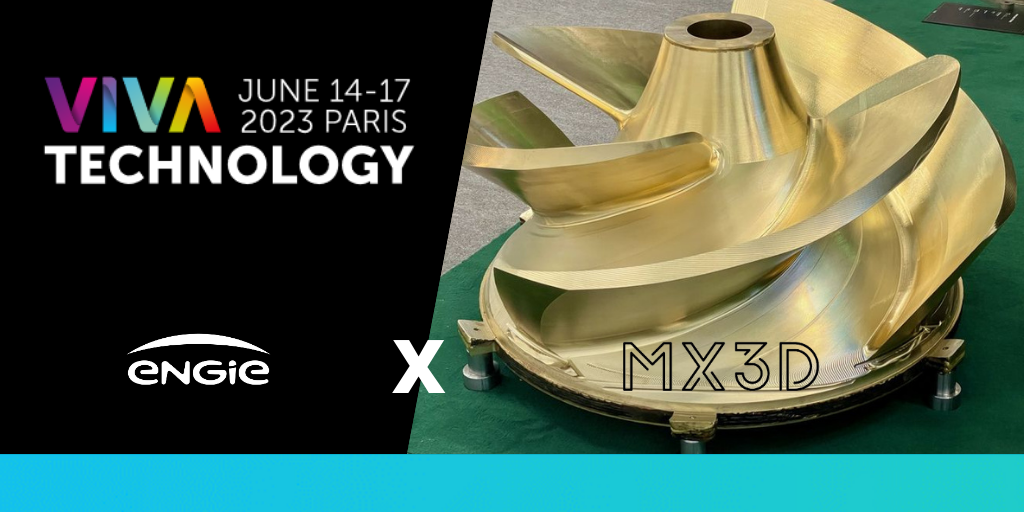

We're convinced that this 3D metal printing technology will benefit many industries globally.
MX3D does robotic 3D metal printing. We’re the company that revealed the potential of robotic 3D metal printing with Wire Arc Additive Manufacturing (WAAM) to various industries, such as the energy industry. Our goal is to make 3D metal printing more flexible, faster and cheaper.
MX3D enables companies, engineers and designers to print end-to-end large-scale 3D metal objects in-house with our MetalXL solutions and turnkey M1 Metal AM System. We became an immediate innovation leader in 3D metal printing by printing a 12-metre fully 3D-printed stainless steel bridge in Amsterdam.
MX3D showcases its robotic 3D metal printing technology. Moreover, we will showcase a 350kg CuAl8Ni2 impeller, fully 3D printed by MX3D’s MetalXL technology for ENGIE Laborelec. The part is originally casted with long lead times up to 6-8 months. With our robotic wire arc additive manufacturing (WAAM) technology, the part was printed in 9 days only. Extensive testing by Laborelec showed that the part qualifies according to certification standards, showcasing the potential and value of the technology to the energy industry.
Thanks. Actually, the foundation of the technology is welding, which has been used for over a century already. The use of welding for 3D metal printing is relatively new and innovative though. It has many advantages over more conventional metal manufacturing technologies, such as casting, forcing or sheet metal works, including faster production, lead time reduction, additional design flexibility (optimisation) and material reduction. Moreover, by using robots, the industry is less dependent on scarce quality welders, while using the endurance (24/7) and flexibility of multi-axis robotic systems for accelerating the manufacturing process. Finally, as it uses off-the-shelf robotic equipment and welding wires as a consumable, compared to the more common 3D metal printing technology of laser powder bed fusion (LPBF) it is a technology that is affordable both in capital and operational expenses. All of these benefits will result in more optimised, flexible and cheaper metal parts for many high-impact industries such as the energy industry.
We join ENGIE at Vivatech to showcase the value of 3D metal printing to various industries with specific use cases. We're both convinced that this technology will benefit many industries globally, for both large multinational companies and SMEs in metal fabrication. Moreover, Viva Technology is a perfect event to further strengthen our collaboration with ENGIE by sharing more insights and opening the network. For a small company like MX3D (with 30 employees and 10 industrial robots currently), we value the opportunity that ENGIE has given us to participate in this event.
Actually, MX3D started from a moonshot idea. In 2015, we wanted to fully 3D print a pedestrian bridge of 12m in the city centre of Amsterdam with robots. After extensive R&D and validation in an amazing collaborative network, we printed the bridge with 4 robots in 2018. The MX3D Bridge is now open to the public in Amsterdam, where more than 1 million people cross it annually.
We currently focus primarily on advancing process control to ensure quality prints with various robots at remote locations. With this, we can print extra-terrestrial. We have already printed a section for the European Space Agency (ESA) for the "Life Beyond Earth" project.
For the energy market, we see quite some potential in using robotic 3D printing for fusion reactors in more optimized parts with less material.
For more information about MX3D: www.mx3d.com